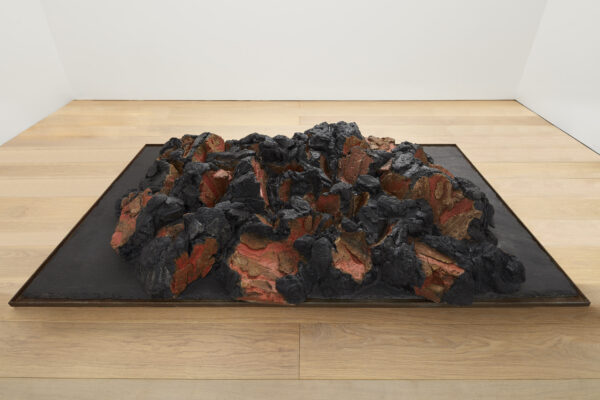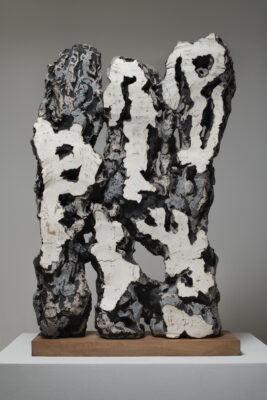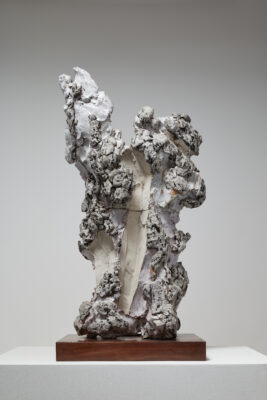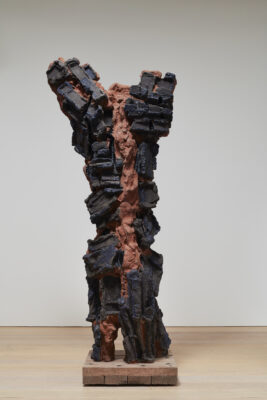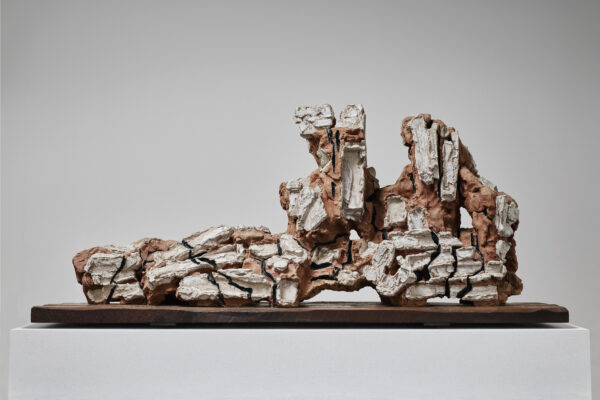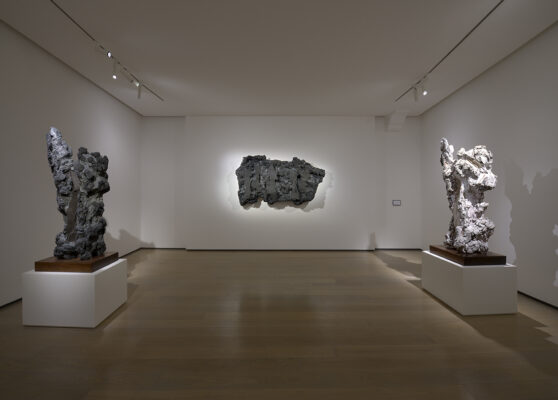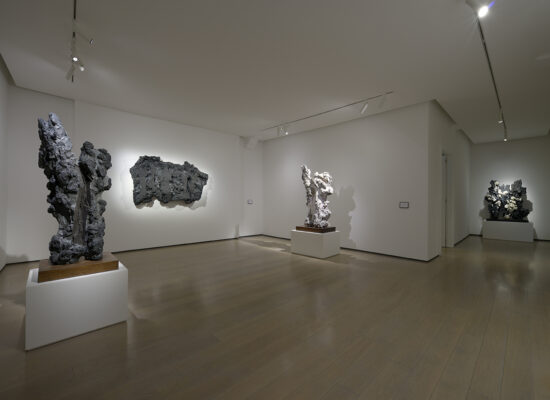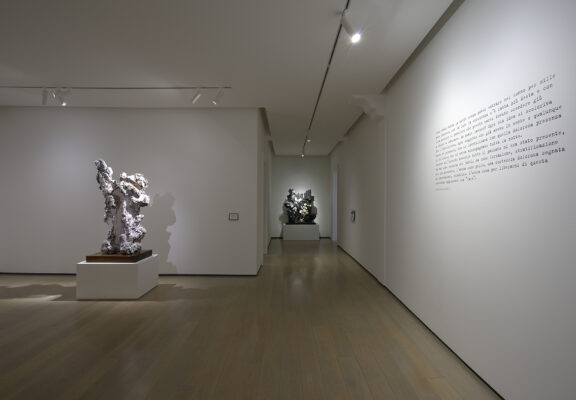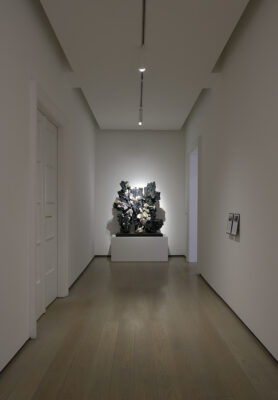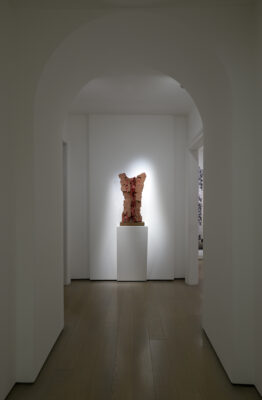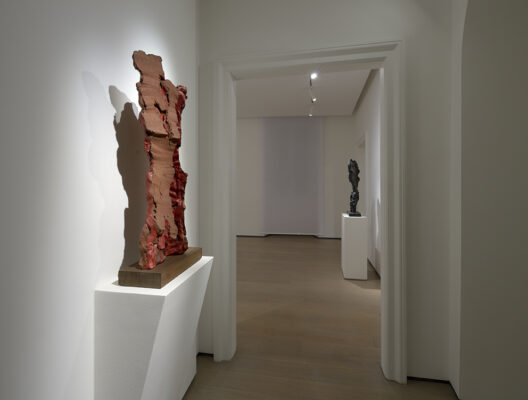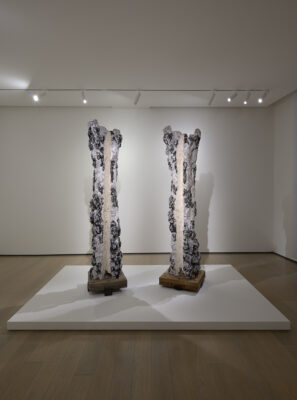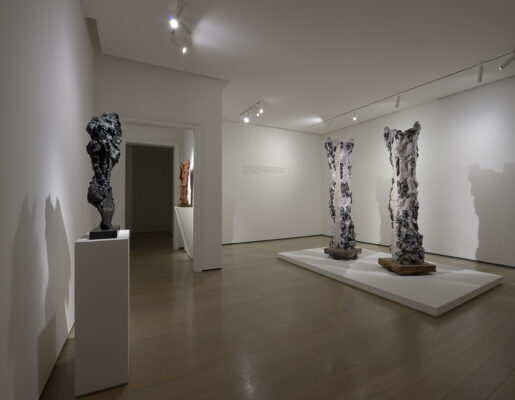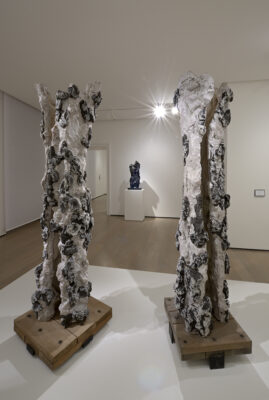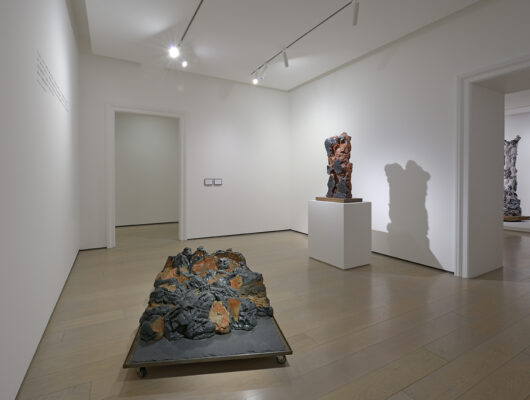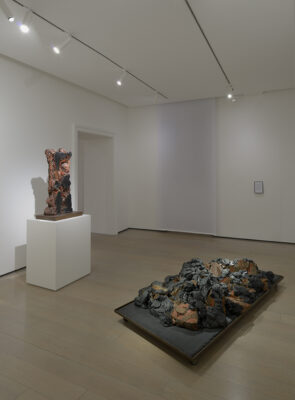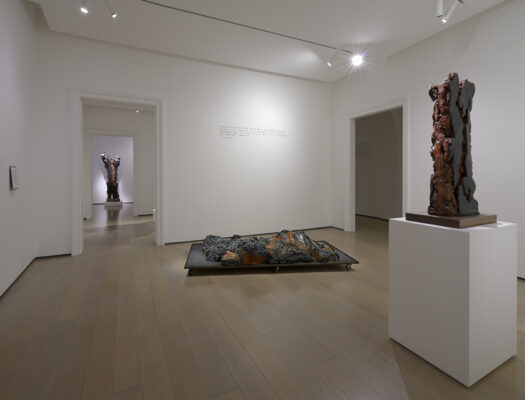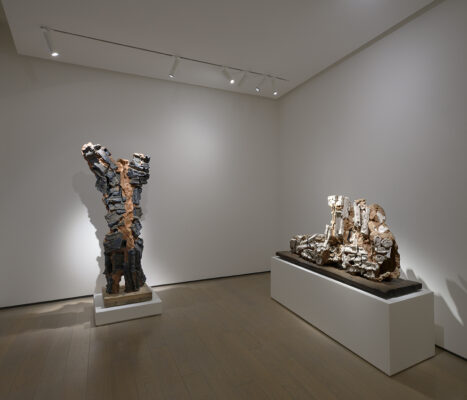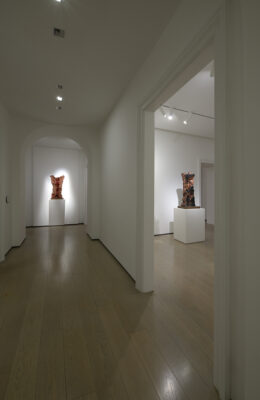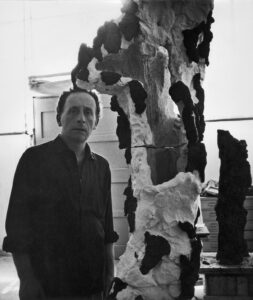Home / Exhibitions / Leoncillo materia radicale works 1958-1968
Leoncillo, materia radicale
works 1958-1968
curated by di Enrico Mascelloni
15.12.2018 — 30.03.2019
Leoncillo
materia radicale
curated by di Enrico Mascelloni
15.12.2018 - 30.03.2019Show introduction
The exhibition, curated by Enrico Mascelloni, includes more than twenty large-scale and medium-sized sculptures chosen from the most significant examples of this period. It will propose an itinerary through the themes that exemplify his art during these years, the object of constant interest by the most authoritative Italian and international critics. The works were created between 1958 and 1968, after his 1957 solo show at the Galleria La Tartaruga in Rome of works which still bore the signs of naturalism and the influence of the Informel movement but that also hinted at the changes that were to follow. The works on show here all have a long series of exhibitions behind them: they were to be seen in various editions of the Venice Biennale, and in many surveys held in important museums throughout Europe, including the initiatives devoted to Italian sculpture promoted by Palma Bucarelli.
Leoncillo was born in Spoleto in 1915 but had already settled in Rome in the 1930s, and from the successive decade, and even more in the 1950s, he was considered one of the protagonists of twentieth century sculpture. In 1947 Alberto Moravia presented his work in the catalogue of the Prima Mostra del Fronte Nuovo delle Arti at the Galleria della Spiga in Milan. Roberto Longhi considered him to be the greatest talent of his times, and in 1954 he wrote the catalogue essay for his solo room at the 27th Venice Biennale and edited the monograph published by De Luca. Cesare Brandi placed him at the top of twentieth century portraiture and considered him to be the equal of Lucio Fontana, the undisputed master of the Italian avant-garde.
This exhibition at the Galleria dello Scudo traces out an itinerary that starts from the solo show of Leoncillo’s work held in 1958 at Bruno Sargentini’s Galleria L’Attico, which resulted in a monograph with essays by Giulio Carlo Argan and Maurizio Calvesi published in 1960. This was a crucial year for the artist who was invited to the 30th Venice Biennale where he exhibited eleven works. Two years later he participated in the Spoleto survey Sculture nella città, an important installation of works by such international masters as Alexander Calder, Henry Moore, David Smith, and Fritz Wotruba.
In 1965 he was to be seen in two exhibitions at Federico Quadrani’s Galleria Odyssia, first in Rome and then in the gallery’s New York venue. In 1967 he was invited to take part, with a gigantic terracotta installation, in the challenging project for the Italian pavilion at the Montreal Expo. After having exhibited at the Modern Art Agency, Lucio Amelio’s gallery in a Naples buzzing with energy, Leoncillo took part for the last time in the 34th Venice Biennale in 1968 with a selection of large-scale sculptures, some of which are to be seen here, such as Vento rosso (1958), Racconto di notte I (1961), San Sebastiano II (1962), Racconto rosso (1963), and Amanti antichi (1965). After Leoncillo’s sudden death in September 1968, Giovanni Carandente organised the first retrospective show of his work, installed in the San Nicolò cloisters, Spoleto, in 1969. This was followed by a wide survey at the Galleria Nazionale d’Arte Moderna, Rome, in 1979, and an anthological show curated by Giuseppe Appella in the fascinating rooms of the Chiese Rupestri and the Circolo La Scaletta in Matera in 2002. At the same time, works by Leoncillo were exhibited on various occasions, many of them at the wish of Fabio Sargentini, the heir to his father Bruno in promoting the artist’s work.
The show’s layout records the themes dealt with by the artist in his final decade. It starts with Vento rosso, 1958, a work that exemplifies one of the main subjects of the artist’s language: horizontal sculpture. It is as though its material had been overwhelmed by an earthquake and tends to an absolute horizontality. This was the start of an experimental front line that was later pushed further by such artists as Pino Pascali, Jannis Kounellis, Carl Andre, and Richard Long. In Sculture con gocce rosse, 1958-1959, at the very edge of the passage from so-called naturalism to its repudiation, the blood that seems to be suggested by the flow of enamel covering the terracotta has all the objective reality and the chilly separateness of an unnatural material. After this there was an obsessive return to forms that were always a part of his vocabulary.
The two San Sebastiano works in black and white, one dating from 1960 and the other from 1962, used once more the title of one of his best-known ceramics dating from 1939. Here the material is creased and agitated by its nervous and ceaseless modelling; it is not by chance that an explicit allusion is made in the title to the saint who traditionally was submitted to a slow and silent death, one unfinished by the sharp and final caesura of a brutal action.The visual impact of Taglio rosso, 1963, derives from an almost smooth surface in open opposition to the magma inside it, a surface which has been eviscerated by the blow of a stick which has stricken it like a judgement. This incision runs across most of the work and has become of the utmost importance, allowing nothing to impede it from fulfilling its own task.
Upward movement, the emphasis given to the “absolute verticality” that at times reduces the width of the work to an indispensible minimum, is expressed in such works from 1962 as San Sebastiano I, San Sebastiano II, and Affinità patetiche now in the Carandente museum in Spoleto. The action that provokes the upward movement of the forms is the incision which has now been opened into a long and deep “split” that for the artist had a precise semantic value. It is quite different from the one that in Taglio bianco, 1959, expands along the whole width and, like a guillotine, strikes the two sides of the sculpture. In the bas-reliefs Racconto di notte I, 1961, and Racconto rosso, 1963, the incision has such a rhythmical movement that it make the very idea of the racconto, the tale, both intelligible and instinctual.
In Tempo ferito II, 1963, the potent and silhouetted form, which alludes to the crucifixion, is covered by irregular bricks of terracotta that force a convulsed and radical material to run along the whole central axis. In Amanti antichi, 1965, the silhouette has been directly taken from the Etruscan Sarcophagus of the Spouses now in the national museum of Villa Giulia, Rome. The married couple has been transformed into two lovers, and so the work becomes an even more intense metaphor for love and death.
For the show Skira will be publishing a lavish catalogue introduced by an essay by the curator Enrico Mascelloni which will analyse the artist’s output by placing it in a wide and densely documented context. This will be followed by an inquiry by Martina Corgnati into the archaic and classical sources that fired the sculptor’s imagination by establishing a direct link with the Etruscan, Greek-Roman, and Medieval statuary. Marco Tonelli will then undertake a critical rereading of the Piccolo diario written by Leoncillo from 1957 to 1964; this document will be reproduced for the first time in an anastatic copy which will be published separately. The works on show will be illustrated by photos by Agostino Osio, together with files for an accurate reconstruction of the artist’s exhibitions and bibliography.
